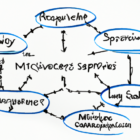In today’s digital age, the demand for faster data processing and real-time analytics is skyrocketing. With the advent of the Internet of Things (IoT) and billions of connected devices generating vast amounts of data, traditional cloud computing solutions are increasingly becoming inadequate. Enter Edge Computing: a revolutionary technology designed to process data closer to where it is generated, thus enhancing efficiency and performance.
What is Edge Computing?
Edge Computing refers to a distributed computing paradigm that brings computation and data storage closer to the location where it is needed. Instead of transmitting all data to a centralized cloud server, edge devices (like routers, gateways, and IoT sensors) process data locally. This minimizes latency, reduces bandwidth use, and improves response times, which is crucial for applications that require real-time data.
Key Benefits of Edge Computing
- Reduced Latency: By processing data at the edge, businesses can significantly lower the time it takes to analyze data and respond to events.
- Bandwidth Efficiency: Edge Computing minimizes the amount of data transmitted to the cloud, conserving bandwidth and reducing costs.
- Improved Privacy and Security: By keeping sensitive data closer to the source, organizations can enhance their security posture and comply with data privacy regulations.
- Real-time Analytics: For industries like healthcare, automotive, and manufacturing, real-time processing of data is crucial for timely decision-making and operational efficiency.
- Scalability: Edge solutions can easily scale as organizations grow and their data processing requirements increase.
Edge Computing and the Internet of Things (IoT)
The synergy between Edge Computing and IoT is particularly powerful. As IoT devices proliferate, they generate massive amounts of data on-site. Edge Computing allows for immediate processing of this data—rather than sending it to a distant cloud for analysis—thus enabling faster insights and actions.
Use Cases of Edge Computing
Several industries are already leveraging Edge Computing to gain a competitive advantage:
- Healthcare: In medical environments, real-time monitoring can trigger immediate alerts for patient care.
- Manufacturing: Smart factories use edge devices to monitor equipment status and prevent downtime.
- Smart Cities: Edge Computing facilitates traffic management, public safety, and utilities optimization in urban infrastructures.
- Retail: Personalized marketing and inventory management can be executed more efficiently at the edge.
Conclusion
Edge Computing not only addresses the shortcomings of traditional cloud solutions but also opens up new possibilities for innovation across various sectors. As businesses continue to integrate more connected devices, adopting edge solutions will be critical for staying ahead in an increasingly data-driven world. Understanding and implementing Edge Computing is the next step toward harnessing the full potential of our digital landscape.
For more insights on technology trends like Edge Computing, stay tuned to our blog!




